HOW DO WE LEARN THE ALEXANDER TECHNIQUE?
My experience is what I agree to attend to.
Only those items which I notice shape my mind –
without selective interest, experience is an utter chaos.
- William James, Principles of Psychology
My experience is what I agree to attend to. Only those items which I notice shape my mind –without selective interest, experience is an utter chaos. - William James, Principles of Psychology
IF WE ARE PERSISTENT, WE CAN GET IT.
IF WE ARE CONSISTENT, WE CAN KEEP IT.
| Our experience is an edited version of what presents itself to our attention. |
 |
ALEXANDER WORK PROMOTES AN EXPANSIVE STANCE THAT HELPS US:
 |
The Alexander Technique is a simple - but not simplistic - system for choosing those few salient factors on which to focus our attention in order to most efficiently and effectively construct and influence our reality. |
RETHINK OUR APPROACH TO LEARNING, RECONNECT WITH OUR BODIES,
| By using the Technique, much of what science and philosophy would consider unconscious can be made conscious. |
 |
REMEMBER TO INHIBIT OUR FIRST REACTION, REBALANCE BEING VS. DOING,
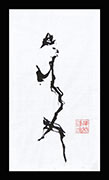 |
Deeper levels of phenomenological awareness to which we do not ordinarily have cognitive access can be reached by pursuing this unique form of psychophysical reeducation. |
REEVALUATE OUR ORIENTATION TOWARD EXPERIENTIAL INFERENCE,
| Because it involves training ourselves to bypass the dominant analytical aspects of the brain, Alexander work is an experiential form of learning, difficult to describe explicitly, as it affects levels of which we can only be implicitly or subliminally conscious. |
 |
RECOGNIZE THE DISTINCTION BETWEEN HABITUAL AND NATURAL,
 |
Sensory awareness and muscular release are the primary aspects of the process, with a constant emphasis on mind/body unity. |
REALIGN THE PSYCHOPHYSICAL CONNECTION,
| Decrease of muscular tension is mediated by expansive visualization. |
 |
REEMPHASIZE HOW VS. WHAT, REIMPLEMENT OPENNESS,
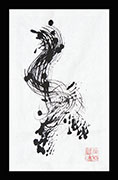 |
While this directional thinking is directly responsible for the dissolution of physical blocks, it also results in the concurrent release of associated psychological tensions. |
REPROGRAM OUR HABITS, REVITALIZE OUR BODIES AND MINDS,
| To alter these long-established, habitual psychophysical patterns requires careful reconditioning on the deepest neuromuscular level. |
 |
REVIVE PREVERBAL MEANS OF INFERENCE,
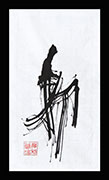 |
The ultimate aim is to free ourselves from unnecessary constraints through the skillful use of embodied thought. |
REORDER OUR PRIORITIES,
| By altering the balance between living and doing, we can come closer to our optimal homeostatic state. |
 |
RELEASE EXCESSIVE MUSCULAR TENSION, REDUCE UNNECESSARY EFFORT,
 |
This process is presented in a context of changing our subjective experience of time and space, exploring errors that result from ignoring, misinterpreting, or missing more subtle levels of our physical experience. |
RESTORE THE BALANCE BETWEEN BEING AND DOING,
| In many ways, the strength of this approach lies in the 1:1 tutorial relationship between teacher and student. |
 |
RECONDITION OUR RESPONSES, RECONSIDER OUR OPTIONS,
 |
Because no two people are the same, each student needs a personal guide. |
REALIZE THE INTERDEPENDENCE OF MIND AND BODY,
| How do you teach more appropriate muscle tone? Teachers tell by touch, monitoring the student's muscular tension while modeling neuromuscular release and feeling whether the student's muscles are responding to the messages being sent to them. |
 |
REORIENT OUR THINKING FROM THE ANALYTICAL TO PICTORIAL,
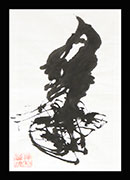 |
How can students tell whether an experience is a constructive one? They need feedback from an external, more experienced, and trustworthy source. |
RESPOND THOUGHTFULLY TO STIMULI WITH EXPANSIVENESS,
| Because it is not like any other modality, we need to experience the Technique firsthand in order to appreciate the quality of kinesthetic release that it imparts. |
 |
REPLACE RIGIDITY WITH FLEXIBILITY,
 |
This is why a complimentary initial session is provided. |
REVIEW OUR OPTIONS, REFRAIN FROM RETREATING INWARD,
| The Alexander Technique is difficult to master because it requires dealing with cause rather than effect. |
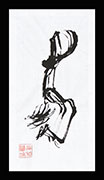 |
REVISE OUR ORIENTATION FROM DIRECT TO INDIRECT,
 |
It is impossible to learn this discipline superficially because it is concerned with rethinking the use of the body rather than with redoing it. |
RELEARN TO COORDINATE ON A MORE EFFICIENT BASIS,
| As such, this makes its study a most worthy project for those who may be looking for a means of self-development. |
 |
REFOCUS OUR ATTENTION ON CAUSE RATHER THAN EFFECT,
 |
It is both intriguing and challenging to attempt this fundamental paradigm shift; it comes neither quickly nor easily. |
REDOUBLE STABILITY ON THE BASIS OF MOBILITY,
| Although intelligence is necessary to understand the nature of the Technique, we must paradoxically abandon the intellect when implementing it, shifting control to the part of the brain that thinks in pictures. |
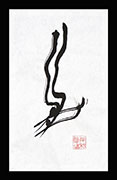 |
RELIABLY ATTAIN A SENSE OF GREATER PRESENCE AND AGENCY,
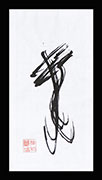 |
This is an indirect process, in which we stop doing the wrong thing in order to permit the right thing to do itself. |
REINSTATE AUTONOMIC BALANCE,
| We cannot jump to conclusions about what is right and wrong, because it is too easy to confuse what is natural with what is familiar. |
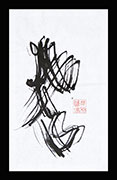 |
RECTIFY MISCONCEPTIONS, REPRODUCIBLY ALTER OUR RESPONSES,
 |
We will be reprogramming the neurobiology behind a way of functioning that has served us, for better or worse, our whole life. |
RECOGNIZE THAT THE BODY IS OUR INSTRUMENT FOR LIVING,
| So to experience a change will require a weekly lesson and a daily practice session of at least twenty minutes for a period of at least ten weeks. |
 |
RELIVE OUR EARLY EXPERIENCE OF EQUIPOISE,
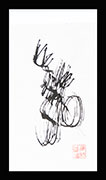 |
To effect a real, lasting change will require making a consistent effort for considerably longer. |
REGAIN TRUST IN OUR CAPABILITIES,
| We should also realize that we are using our bodies continually, and so the principles can be implemented repeatedly throughout the day. |
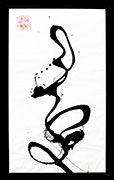 |
REFRAIN FROM HOLDING,
 |
Even if we work at this regularly, progress will be slow. |
REACT TO CHALLENGES WITH EXPANSIVENESS,
| As in the learning of any skill, in the beginning there will be marked improvement, but then this will level off for a period. |
 |
REIMPLEMENT EMBODIED THINKING,
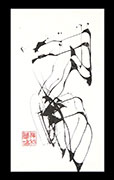 |
It will require patience, because even after we understand and practice this approach, it will take time before we can experience its effects in our lives on a regular basis. |
REENLIVEN THE SPRING IN OUR STEP,
| Basically, we need to decondition the neuromuscular process that produces tension in response to intensity and to recondition it to one of release. |
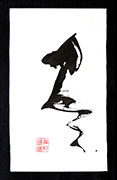 |
RELIEVE STRAINS OF ALL SORTS,
 |
This manifests on a psychological level as well as on a physical plane, and we cannot improve the one without having the other do the same. |
RENEW OUR RESILIENCE,
| Because we translate everything into muscle tension, the goal is to counter the tensions generated through living in the world by substituting elastic bracing for rigid bracing, so creating/preserving flexibility instead of holding, clutching, and grabbing. |
 |
REASSESS OUR SELF-IMAGE,
 |
Releasing unnecessary knots of muscular contraction in this way frees energy trapped in the body. |
REFINE OUR PHENOMENOLOGICAL AWARENESS,
| Due to psychophysical interdependence, to unlock the body is to unlock the mind, and vice versa. |
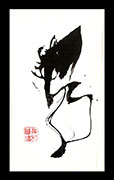 |
REVISIT OUR CHOICES,
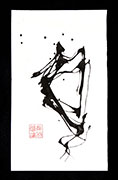 |
The Alexander Technique, then, is a physically based discipline with a broader potential, in that it promotes a greater sense of presence and agency by reconnecting us with our body. |
REVERSE COUNTERPRODUCTIVE HABITS,
| Studying the Technique gives us the opportunity to learn more about our physicality and its conditioning, so that we can meet both physical and emotional challenges with a more calm and stable awareness and a more thoughtfully embodied response. |
 |
&
REESTABLISH CALM.







































